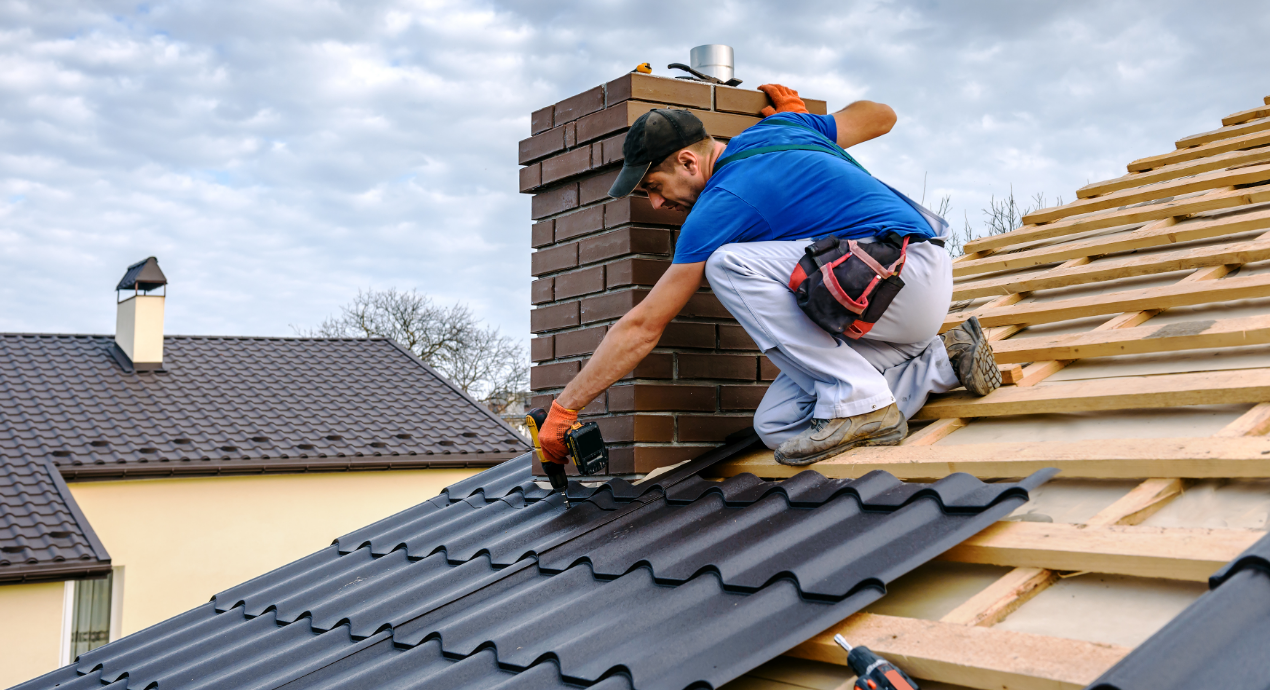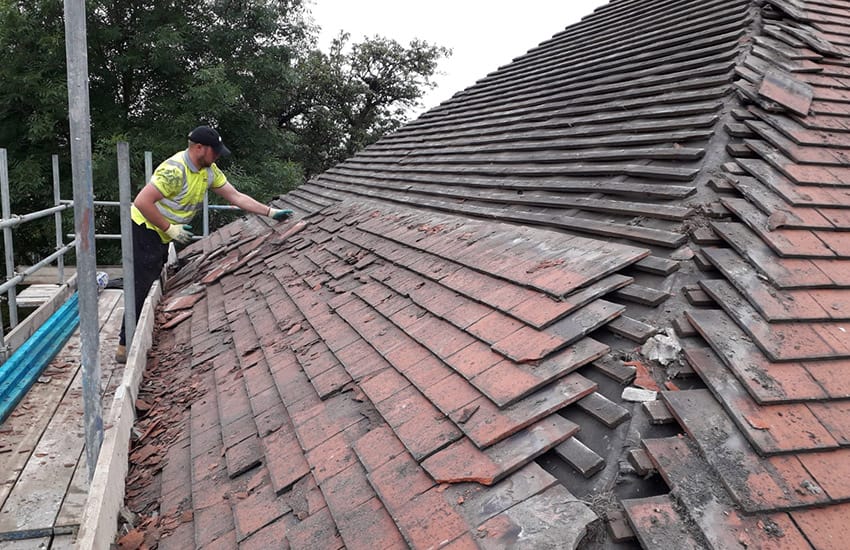Roof Repair Oahu: Professional Roof Services for Lasting Protection
Roof Repair Oahu: Professional Roof Services for Lasting Protection
Blog Article
Comprehending the Various Types of Roofing Systems: A Comprehensive Guide for Homeowners
With a selection of choices-- varying from the conventional gable to the contemporary flat-- each type offers distinct advantages and obstacles that ought to straighten with the home owner's ecological considerations and particular requirements. As we discover the intricacies of different roof covering kinds, it ends up being apparent that one size does not fit all; the right selection might stun you.
Saddleback Roof
Saddleback roofs, identified by their triangular shape, are among one of the most prominent roof designs because of their simpleness and performance in losing water and snow. This design includes two sloping sides that fulfill at a ridge, allowing for reliable drain and reducing the risk of water accumulation. The steep pitch typically connected with gable roofs boosts their capability to deal with hefty rainfall, making them ideal for different climates.
In enhancement to their practical benefits, gable roof coverings offer visual adaptability. They can be adjusted to different architectural styles, from typical to contemporary homes. The design can additionally accommodate additional features such as dormer home windows, which boost all-natural light and air flow in the attic room.
Furthermore, gable roof coverings give adequate space for insulation, adding to power effectiveness. Home owners can select from a variety of roofing materials, including asphalt roof shingles, steel, and tiles, even more boosting modification choices.
Regardless of their benefits, gable roofings might require added assistance in areas vulnerable to high winds or hefty snowfall. In general, the saddleback roof remains a popular option due to its blend of performance, sturdiness, and aesthetic charm.
Flat Roofs
Flat roofings are typically recognized for their minimalist layout and useful applications, especially in industrial and commercial setups (oahu roofing). These roofs include a virtually horizontal or horizontal surface area, which permits simple building and functional space utilization. While they might lack the visual allure of angled roofs, level roof coverings offer numerous benefits, especially in urban atmospheres where optimizing room is vital
One of the primary advantages of level roofs is their ease of access. Homeowners can use the roof area for various objectives, such as roof gardens, terraces, or photovoltaic panel installations. Additionally, flat roofing systems are typically much more economical to set up and preserve contrasted to their sloped equivalents, as they call for less products and labor.
Nonetheless, level roofs do existing specific challenges. Proper drainage is necessary to protect against water pooling, which can bring about leakages and structural damages. Thus, choosing top quality waterproofing materials and normal inspections are important for ensuring durability. Typical products used for level roofs consist of built-up roof (BUR), changed bitumen, and single-ply membranes, each offering distinctive advantages. On the whole, level roofs function as a useful and adaptable selection for many house owners and businesses alike.
Hip Roofing Systems
Hip roofings are defined by their sloped sides that merge on top, creating a ridge. This design stands out from gable roof coverings, as all four sides of a hip roof covering slope downwards towards the walls, offering an extra secure framework. The angle of the inclines can differ, enabling flexibility in building aesthetics and capability.
Among the key advantages of hip roofs is their ability to endure heavy winds and unfavorable climate condition. The sloped surfaces make it possible for better water drain, reducing the danger of leakages and water damages. Additionally, hip roof coverings supply raised attic room room, which can be utilized for storage and even transformed into comfortable areas.
However, building a hip roofing system can be a lot more costly and complicated than simpler roofing kinds, such as gable roofing systems. The added material and labor entailed in developing the slopes and making sure proper architectural stability can lead to greater expenditures. Regardless of these drawbacks, lots of homeowners favor hip roofs for their sturdiness, aesthetic charm, and potential for energy effectiveness.
Mansard Roof Coverings
Mansard roofing systems, typically identified by their one-of-a-kind four-sided design, attribute two slopes on each side, with the reduced incline being steeper than the top. This building design, originating from France in the 17th century, is not just cosmetically attractive yet practical, as it takes full advantage of the functional room in the top floors of a building. The high lower slope permits even more headroom, making it an ideal selection for attic rooms or loft spaces, which can be transformed into living areas.
Mansard roofing systems are identified by their adaptability, accommodating numerous architectural designs, from standard to modern-day. They can be built with different products, consisting of asphalt shingles, slate, or metal, offering homeowners with a range of choices to match their spending plans and preferences. In addition, the design enables the combination of dormer home windows, enhancing natural light and ventilation in the upper degrees.
Nonetheless, it is important to consider the potential downsides. Mansard roofings might require even more maintenance because of the intricacy of their Clicking Here design, and their steep inclines can be testing for snow and rain runoff. In general, mansard roofings incorporate sophistication with usefulness, making them a prominent selection among homeowners looking for unique architectural features.
Shed Roofings
As house owners increasingly seek simpleness and performance in their building layouts, lost roofing systems have actually arised as a prominent option. Defined by a single sloping aircraft, a shed roof offers a minimalist aesthetic that complements different home designs, from modern to rustic.
One of the primary advantages of a shed roof is its straightforward construction, which frequently equates to reduce labor and material costs. This design permits efficient water drain, reducing the threat of leakages and water damages. In addition, the vertical incline gives sufficient space for skylights, boosting natural light within the interior.
Dropped roofing systems likewise provide adaptability in terms of use. They can be properly incorporated right into Homepage additions, garages, or exterior frameworks like pavilions and sheds. Additionally, this roofing system design can fit various roof products, consisting of metal, asphalt tiles, or also green roofs, lining up with environmentally friendly campaigns.
Nevertheless, it is important to consider regional environment conditions, as heavy snow loads may necessitate modifications to the roofing system's angle or structure. Overall, lost roofings present a sensible and aesthetically pleasing choice for property owners wanting to optimize functionality without jeopardizing design.
Final Thought


Gable roofings, defined by their triangular shape, are amongst the most popular roof styles due to their simpleness and performance in shedding water and snow. oahu roofing. The high pitch generally associated with gable roofing systems enhances their capacity to handle heavy precipitation, making them suitable for various climates
While they may lack the visual allure of pitched roofings, flat roof coverings offer various advantages, specifically in city why not try here environments where taking full advantage of area is crucial.

Report this page